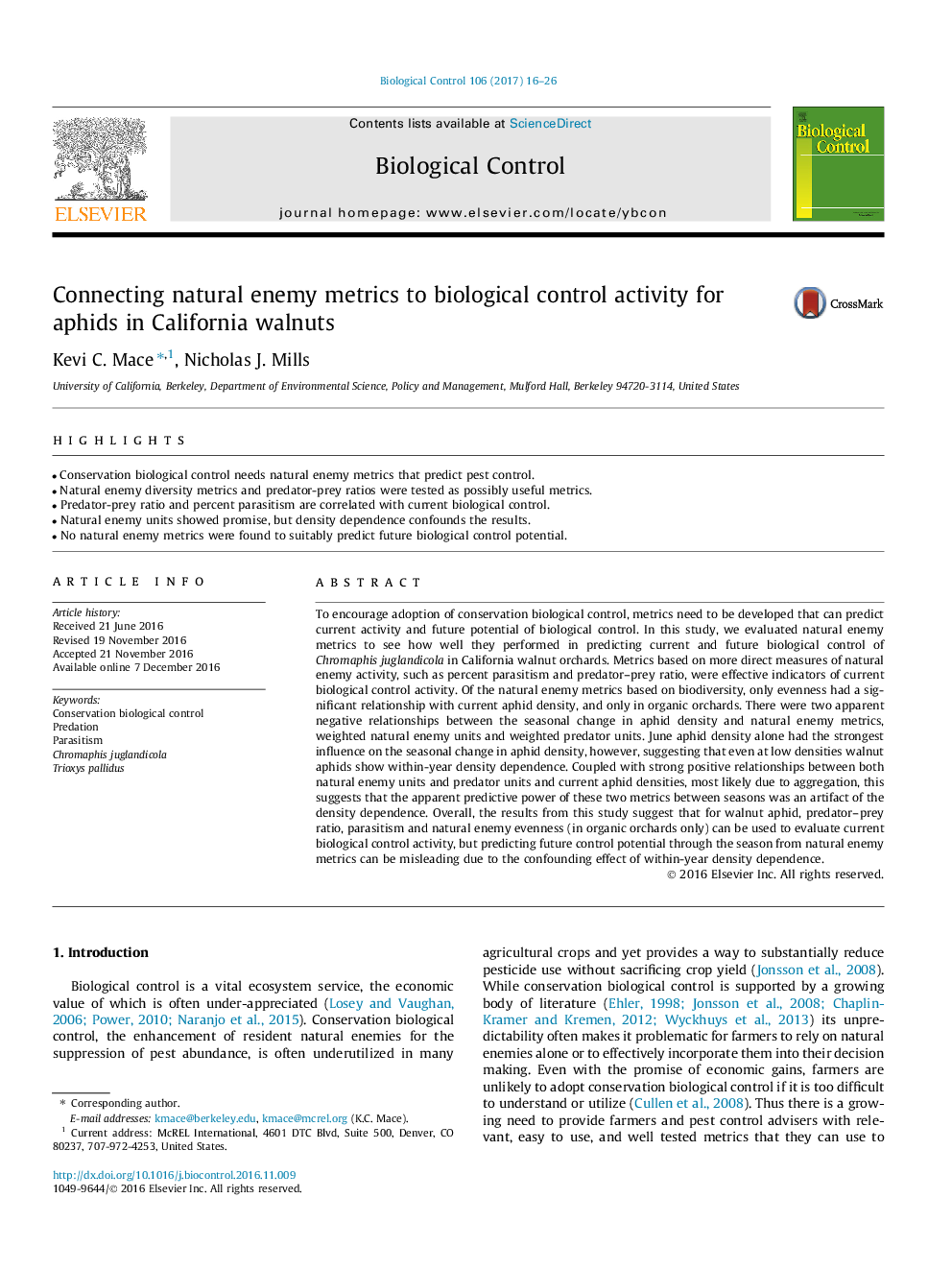| Article ID | Journal | Published Year | Pages | File Type |
|---|---|---|---|---|
| 5760675 | Biological Control | 2017 | 11 Pages |
Abstract
To encourage adoption of conservation biological control, metrics need to be developed that can predict current activity and future potential of biological control. In this study, we evaluated natural enemy metrics to see how well they performed in predicting current and future biological control of Chromaphis juglandicola in California walnut orchards. Metrics based on more direct measures of natural enemy activity, such as percent parasitism and predator-prey ratio, were effective indicators of current biological control activity. Of the natural enemy metrics based on biodiversity, only evenness had a significant relationship with current aphid density, and only in organic orchards. There were two apparent negative relationships between the seasonal change in aphid density and natural enemy metrics, weighted natural enemy units and weighted predator units. June aphid density alone had the strongest influence on the seasonal change in aphid density, however, suggesting that even at low densities walnut aphids show within-year density dependence. Coupled with strong positive relationships between both natural enemy units and predator units and current aphid densities, most likely due to aggregation, this suggests that the apparent predictive power of these two metrics between seasons was an artifact of the density dependence. Overall, the results from this study suggest that for walnut aphid, predator-prey ratio, parasitism and natural enemy evenness (in organic orchards only) can be used to evaluate current biological control activity, but predicting future control potential through the season from natural enemy metrics can be misleading due to the confounding effect of within-year density dependence.
Related Topics
Life Sciences
Agricultural and Biological Sciences
Agronomy and Crop Science
Authors
Kevi C. Mace, Nicholas J. Mills,
